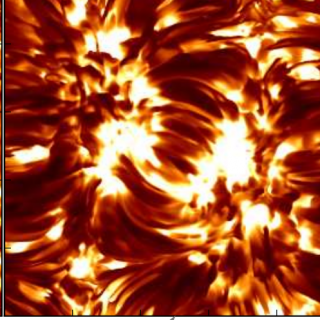Bibcode
Asensio-Ramos, A.; Manso-Sainz, R.; Martínez-González, M. J.; Viticchié, B.; Orozco-Suárez, D.; Socas-Navarro, H.
Referencia bibliográfica
The Astrophysical Journal, Volume 748, Issue 2, article id. 83 (2012).
Fecha de publicación:
4
2012
Revista
Número de citas
18
Número de citas referidas
18
Descripción
Inferring magnetic and thermodynamic information from
spectropolarimetric observations relies on the assumption of a
parameterized model atmosphere whose parameters are tuned by comparison
with observations. Often, the choice of the underlying atmospheric model
is based on subjective reasons. In other cases, complex models are
chosen based on objective reasons (for instance, the necessity to
explain asymmetries in the Stokes profiles) but it is not clear what
degree of complexity is needed. The lack of an objective way of
comparing models has, sometimes, led to opposing views of the solar
magnetism because the inferred physical scenarios are essentially
different. We present the first quantitative model comparison based on
the computation of the Bayesian evidence ratios for spectropolarimetric
observations. Our results show that there is not a single model
appropriate for all profiles simultaneously. Data with moderate
signal-to-noise ratios (S/Ns) favor models without gradients along the
line of sight. If the observations show clear circular and linear
polarization signals above the noise level, models with gradients along
the line are preferred. As a general rule, observations with large S/Ns
favor more complex models. We demonstrate that the evidence ratios
correlate well with simple proxies. Therefore, we propose to calculate
these proxies when carrying out standard least-squares inversions to
allow for model comparison in the future.
Proyectos relacionados

Magnestismo Solar y Estelar
Los campos magnéticos son uno de los ingredientes fundamentales en la formación de estrellas y su evolución. En el nacimiento de una estrella, los campos magnéticos llegan a frenar su rotación durante el colapso de la nube molecular, y en el fin de la vida de una estrella, el magnetismo puede ser clave en la forma en la que se pierden las capas
Tobías
Felipe García

Magnetismo, Polarización y Transferencia Radiativa en Astrofísica
Los campos magnéticos están presentes en todos los plasmas astrofísicos y controlan la mayor parte de la variabilidad que se observa en el Universo a escalas temporales intermedias. Se encuentran en estrellas, a lo largo de todo el diagrama de Hertzsprung-Russell, en galaxias, e incluso quizás en el medio intergaláctico. La polarización de la luz
Ernest
Alsina Ballester